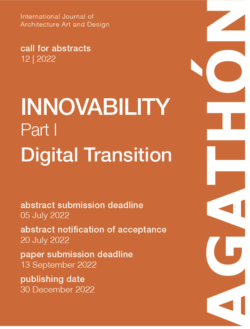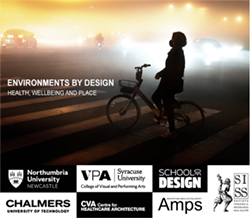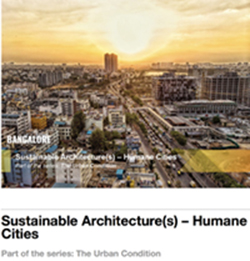ISSN (online): 2071-1050
Call of the Journal:
- Agricultural Innovation and Sustainable Development
- Applications of Artificial Intelligence in New Energy Technology Systems
- Approaches to the Non-conflictual Use of Resources
- Artificial Intelligence (AI) and Sustainable Development Goals (SDGs) | Exploring the Impact of AI on Politics and Society
- Autonomous Vehicles | Future of Transportation Sustainability
- Belt & Road Initiative in Times of ‘Synchronized Downturn’ | Issues, Challenges, Opportunities
- BIM-Based Life Cycle Sustainability Assessment for Buildings
- Biochar and Greenhouse Gas Emissions during Livestock Bio-Waste Composting
- Bringing Governance Back Home | Lessons for Local Government regarding Rapid Climate Action
- Carbon Neutrality and Sustainability
- Challenges and Opportunities for a Sustainable Tourism Sector
- Circular Economy | A Move towards Economical Viable Sustainability
- Circular Economy Evaluation | Towards a Transparent and Traceable Approach under a Life Cycle Perspective
- Climate Adaptation and Mitigation through Sustainable Energy Solutions
- Considering Irreversibility in Transport Infrastructure Planning
- Construction 4.0 | The Next Revolution in the Construction Industry
- Corporate Sustainability and Sustainable Management in Changing Environments
- Covid-19 and Urban Inequalities | Spatial and Digital Dimensions
- Designing and Implementing Innovative Business Models and Supply Chains | The Digitalization and Sustainability Imperative
- Digital Economy, E-commerce, and Sustainability
- Eco-Didactic Art, Design, and Architecture in the Public Realm
- Economy and Sustainability of Natural Resources
- Educational Spaces and Sustainability
- Effects of Climate Change on Sustainable Agriculture
- Efficient and Non-polluting Biomass and Wastes Thermal Gasification
- Emerging Research on Socio-Technological Sustainability Transitions
- Energy System Sustainability
- Environmental Impacts under Sustainable Conservation Management
- Environmental Management Approaches and Tools to Boost Circular Economy
- Environmental Migration and Displacement-Migration Aspirations in Response to Environmental Changes
- Exploring and Analyzing Links between the Covid-19 Pandemic and Globalization | Levers for Sustainability Transitions?
- Farming System Design and Assessment for Sustainable Agroecological Transition
- Geological Heritage and Biodiversity in Natural and Cultural Landscapes
- Governance of Technology in Smart Cities
- Green Building Technologies II
- High Precision Positioning for Intelligent Transportation System
- Household Food Waste | From an International Perspective
- Hydrological Responses by Climate Change and Human Activities
- IEIE Buildings (Integration of Energy and Indoor Envirornent)
- Influence of Hydrometeorological Hazards on Regional Sustainable Development in Vulnerable Mountain Areas
- Infotainment Systems and Intelligent Vehicles
- Innovations towards Greener and Smarter Mobility for Sustainable Development
- Innovative and Sustainable Technology in Carbon Emission Reduction
- Innovative Food Science and Sustainable Process Management
- Integration of BIM and ICT for Sustainable Building Projects
- Karst and Environmental Sustainability
- Low CO2 Concrete
- Machine Learning for Sustainable Energy
- Maladaptation to Climate Change
- Management and Innovation for Environmental Sustainability
- Management Approaches to Improve Sustainability in Urban Systems
- Mediatization of Social Sustainability | Paradigm of Explicitation and Understanding of the Environment, Society and the Economy
- Modelling and Mapping of Soil
- Natural and Technological Hazards in Urban Areas | Assessment, Planning and Solutions
- Nature-Based Tourism, Protected Areas, and Sustainability
- New Environmental, Economic and Social Challenges for Raw Materials Supply | Sustainable Mining and Extractive Waste Exploitation
- New Evidences of Indoor Thermal Comfort in Residential and Tertiary Buildings | Design and Evaluation Methods
- Organic and Perovskite Photovoltaics | New Materials, New Processes and Stability
- Planning and Design Interventions for Improving the Well-Being of Vulnerable Groups
- Port Governance
- Public Health Related to Climate Change
- Public Transport Accessibility and Sustainability
- Recycling and Sustainability of Plastics
- Regenerative Buildings and Beyond | Scale Jumping Sustainable and Net-Zero Designs to Regenerative Neighbourhoods, Districts, Communities, and Cities
- Renewable Energies for Sustainable Development
- Rural Development | Challenges for Managers and Policy Makers
- Scientific Theory and Methodologies toward a Sustainable Future under Post-Covid-19 Transition Movement
- Sheltering and Housing Displaced Populations
- Smart City Innovation and Resilience in the Era of Artificial Intelligence
- Soil Stabilization in Sustainability
- Sustainability and Agricultural Economics
- Sustainability at the Nexus between Climate Change and Land Use Change
- Sustainability in Water and Wastewater Treatment Technologies
- Sustainable and Safe Two-Wheel Mobility
- Sustainable Building and Sustainable Indoor Environment
- Sustainable Cities | Challenges and Potential Solutions
- Sustainable Construction Engineering and Management
- Sustainable Cropping Practices to Counteract Environmental Stresses
- Sustainable Development and Practices | Production, Consumption and Prosumption
- Sustainable Development of Energy, Water and Environment Systems (SDEWES)
- Sustainable Enterprise Excellence and Innovation
- Sustainable Entrepreneurship, Firm Performance and Innovation
- Sustainable Geotechnics | Theory, Practice, and Applications
- Sustainable Innovation Trends and Global Value Chains in Emerging Markets
- Sustainable Intelligent Manufacturing and Logistics Systems
- Sustainable Railway Systems | Innovation and Optimization
- Sustainable Transportation Management, Governance and Public Policy
- Sustainable Transportation Planning and Policy
- Sustainable Zero Energy Buildings
- Systems Engineering for Sustainable Development Goals
- The Human Side of Sustainable Innovations
- The Value Generation of Social Farming
- Towards a Sustainable Urban Planning for the Green Deal Era
- Urban Microclimate and Air Quality as Drivers of Urban Design
- Urban Renewal, Governance and Sustainable Development | More of the Same or New Paths?
- Urban Sprawl and Sustainability II
- Urban Sustainability | Community-Scale Climate Adaptation
- Urban Sustainability | Re-envisioning Cities to Lead the Way toward to Circular Economy
- Urbanization and Road Safety Management
- Water-Food-Energy Nexus for Sustainable Development
- World Cities in the Era of Globalization
Jan
2021
Feb
2021
From the original attention on residential buildings, thermal comfort-related issues are increasingly also involving tertiary buildings, since people tend to spend an increasing amount of time on such premises. This opens to a rethinking of the available methods for evaluating thermal comfort conditions. In fact, in tertiary buildings, people usually experience the confined environments differently compared to the residential ones in terms of both permanence (in that confined environment) and modalities of moving inside them. In museums, for example, people stand for a certain amount of time in front of a given artwork and, in order to take best advantage of the exhibited artefact, need pleasant thermal and visual conditions around. For this purpose, it is fundamental to study the dependence between indoor climate experience and occupants’ comfort expectation. Clearly, this requires a reflection on the assessment method of the confined environment to be used, even more when considering that the indoor comfort conditions are more frequently included within the economic criteria that define the whole quality of buildings. However, the fact that the attainment of high-level comfort conditions by necessity involves the use of energy for the building’s air-conditioning must be properly taken into account. On the other hand, as for the residential buildings, the new evidence concerning adaptive comfort must be considered. Additionally, current tools such as multi-agent schemes, aimed at the assessment of subjective indoor comfort, are increasingly gaining foot. Finally, the changing layout and metabolism of cities determine new spaces where people live and work, which cannot be classified as either indoors or outdoors. In these cases, a different approach to the thermal comfort evaluation is needed. Hence, all the above-cited issues should become part of the rationales for modelling indoor thermal comfort.
High-quality papers addressing the above-mentioned issues (though not limited to these) are solicited, with particular interest in theoretical and experimental analysis with the aim of providing new methods, new indicators, or new data useful for the evaluation and the achievement of indoor thermal comfort.
New Evidences of Indoor Thermal Comfort in Residential and Tertiary Buildings | Design and Evaluation Methods
From the original attention on residential buildings, thermal comfort-related issues are increasingly also involving tertiary buildings, since people tend to spend an increasing amount of time on such premises. This opens to a rethinking of the available methods for evaluating thermal comfort conditions. In fact, in tertiary buildings, people usually experience the confined environments differently compared to the residential ones in terms of both permanence (in that confined environment) and modalities of moving inside them. In museums, for example, people stand for a certain amount of time in front of a given artwork and, in order to take best advantage of the exhibited artefact, need pleasant thermal and visual conditions around. For this purpose, it is fundamental to study the dependence between indoor climate experience and occupants’ comfort expectation. Clearly, this requires a reflection on the assessment method of the confined environment to be used, even more when considering that the indoor comfort conditions are more frequently included within the economic criteria that define the whole quality of buildings. However, the fact that the attainment of high-level comfort conditions by necessity involves the use of energy for the building’s air-conditioning must be properly taken into account. On the other hand, as for the residential buildings, the new evidence concerning adaptive comfort must be considered. Additionally, current tools such as multi-agent schemes, aimed at the assessment of subjective indoor comfort, are increasingly gaining foot. Finally, the changing layout and metabolism of cities determine new spaces where people live and work, which cannot be classified as either indoors or outdoors. In these cases, a different approach to the thermal comfort evaluation is needed. Hence, all the above-cited issues should become part of the rationales for modelling indoor thermal comfort.
High-quality papers addressing the above-mentioned issues (though not limited to these) are solicited, with particular interest in theoretical and experimental analysis with the aim of providing new methods, new indicators, or new data useful for the evaluation and the achievement of indoor thermal comfort.
AGORA (FAO), AGRIS-Agricultural Sciences and Technology (FAO), Animal Science Datbase (CABI), CAB Abstracts (CABI), Chemical Abstracts (ACS), Current Contents Sciences (Clarivate Analytics), DOAJ, EconPapers (RePEc), FSTA-Food Science and Technology Abstracts (FIS), Genamics Journal Seek, GeoBase (Elsevier), Global Health (CABI), HINARI (WHO), IDEAS (RePEc), Inspec (IET), Journal Citation Reports/Science Edition (Clarivate Analytics), Journal Citation Reports/Social Science Edition (Clarivate Analytics), Norwegian Register for Scientific Journals, Series and Publishers (NSD), RePEC, Review of Agricultural Entomology (CABI), Science Citation Index Expanded-Web of Science (Clarivate Analytics), Scopus (Elsevier), Social Science Citation Index-Web of Science (Clarivate Analytics), Web of Science (Clarivate Analytics), CLOCKSS (Digital Archive), e-Helvetica (Swiss National Library Digital Archive), Academic OneFile (Gale/Cengage Learning), EBSCOhost (EBSCO Publishing), Google Scholar, J-Gate (Informatics India), ProQuest Central (ProQuest), Science in ContexT (Gale/Cengage Learning), WorldCat (OCLC).
Info at: www.mdpi.com/journal/sustainability/apc
Guest Editors
Dr. Domenico Mazzeo
Dr. Giorgia Peri









